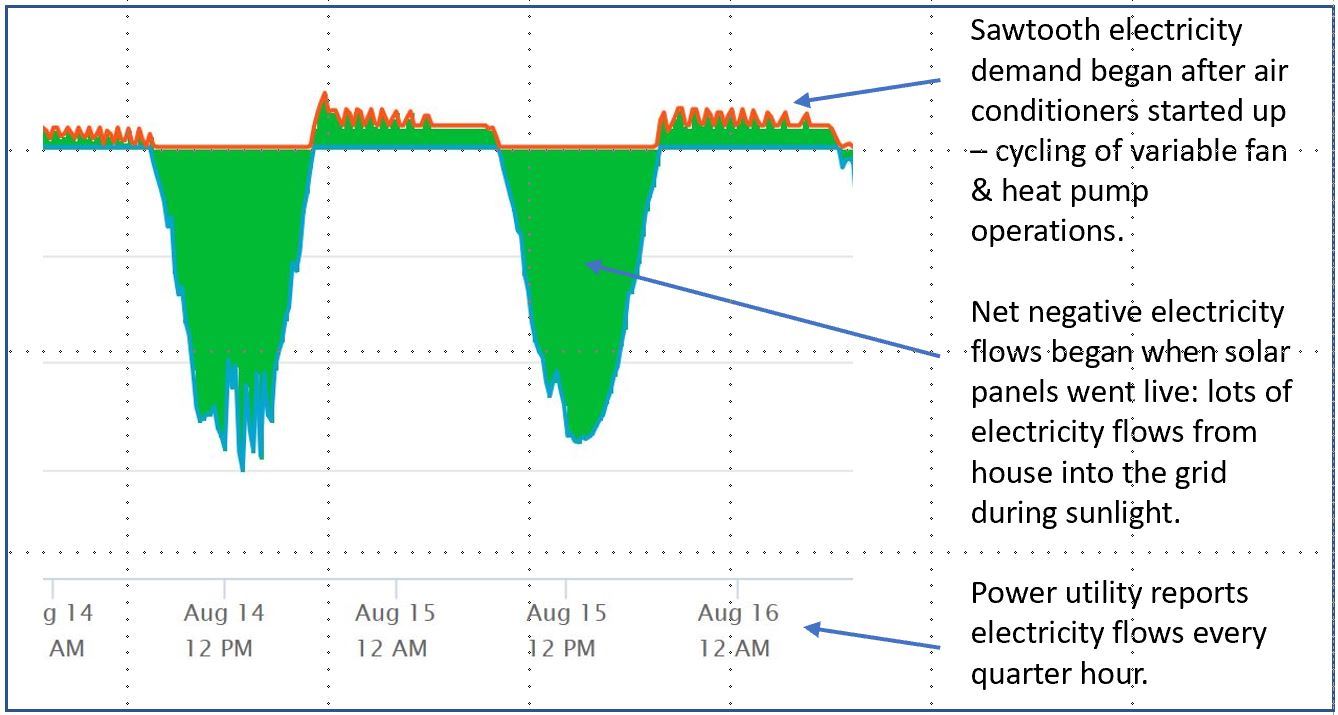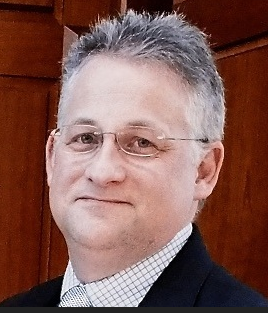USAEE Conference - Looking Ahead to This Year
By Devin Hartman | R Street Institute
This year's USAEE conference will offer an insightful refresh on many themes and explore today's hot topics like the DOE and FERC agendas and energy protectionism in practice. Expert panels will explore the battery revolution, new findings in energy consumer behavior, U.S. energy production resurgence, and more!
Last year's USAEE conference in Houston showcased leading research in areas like intelligent energy systems and integrating renewables into electricity markets. It also revealed practitioner insights on topics ranging from entrepreneurship in energy to the shifting geopolitics of oil and natural gas. Plus, the networking opportunities proved valuable to students, academics, and professionals on a variety of energy career paths.
And don't forget that NCAC member Natalie Kempkey will be moderating a plenary session. The workshop on energy risk management features NCAC's own Elaine Levin and Alan Levine. There is also a Tuesday tour of NCAC member Andy Knox's net zero home in D.C. Plus, the Sunday workshop on Making Good Presentations is chaired by past USAEE and NCAC president Adam Sieminski. Barney Rush did a write-up about his panel, below.

USAEE Conference September 2018 – Keeping the Grid Reliable
By Barney Rush, Board Member, ISO New England | Rush Energy Consulting
NCAC members have been helping to organize the upcoming USAEE Conference in Alexandria, Sunday, September 23 through Wednesday, September 26. On Tuesday, September 25, I will be moderating a plenary panel that will focus on one of the major challenges facing US wholesale power markets: how ISOs/RTOs will maintain reliability as the grid is powered increasingly by gas and renewables.
Will markets work to sustain needed conventional generation, in an era of low energy prices? How should ISOs adjust their markets and planning to account for demand side management and distributed generation? Can these challenges be addressed with continued reliance on markets, or will we enter a new era of regulated returns?
The panelists include two chief executive officers of ISOs: Andy Ott from PJM and Gordon van Welie from ISO New England. They will be joined by Thad Hill, CEO of Calpine. The institutions that they oversee are at the center of the debates on these critical issues, and we look forward to hearing the thoughts and insights of these three leading executives.
Propane Prices and Why They Matter
By Jim McDonnell | Avalon Energy Services
The shale revolution has led to a dramatic increase in the production of natural gas and associated propane. Despite expanding demand, the increasing supply of natural gas has kept natural gas prices low. Has the increasing supply of propane kept propane prices low? No. Read more here about this issue of importance to rural areas that are "beyond the main" for natural gas service.
Mid-August Update: This Green House Geothermal Start-Up
By Ben Schlesinger | Benjamin Schlesinger and Associates, LLC (BSA)
We’re getting closer! Our attempted net-carbon-neutral house in St. Michaels, Maryland, won’t be finished for another two months, but its energy systems are now starting to spool up. Although it’s still too soon to report any systematic results, data reported on our utility and solar provider apps look promising.
This month’s illustration (attached) is a snapshot of the past few days from our page on Choptank Electric Cooperative’s website. The indication is that our 50 SunPower solar PV panels have continued to overproduce electricity, which we’re selling back to the grid via Choptank (also see last month’s report). Then, this past week, we started up our 8-well geothermal ground-source heat pump system. Things changed a little (see sawtooth pattern in the figure) but this still looks highly positive – i.e., we're producing from solar energy much more electricity than demanded on site, even despite enjoying a nice, cool house in 90-degree weather!
Preliminary, it appears likely that electricity produced by our panels will continue to more than meet the house’s space conditioning and water heating energy demands. On sunny days, this will be especially so, including around the clock after our three Tesla Powerwall batteries are delivered and installed - but on dark, cloudy days, we’re unlikely to make HVAC ends meet without buying electricity from the grid.
Looking ahead, we expect our electricity uses to increase after our kitchen (mostly electric) is installed next month, and after the house lights up at night in late September, and as soon as we move mid-October and plug in everything, including the cars! With all this, if our solar panels are still overproducing, then we’ll keep selling the excess back to the grid. We should have a reasonable indication in another two months or so.
Sometime in 2019, we'll be able to present results on a more systematic basis in terms of pay-back periods and the project’s implicit avoided cost of carbon.


World Gas Conference 2018
By Rita Beale | Energy Unlimited LLC
Washington D.C. was the locale of the triennial World Gas Conference held by the International Gas Union (IGU) and hosted by the American Gas Association. The event marked the culmination of the United States holding the IGU Presidency with a theme of “Fueling the Future”. I was compelled to attend the event with the global natural gas community in our backyard and the opportunity to focus on the strategic, commercial, and technical aspects of gas. It also provided an opportunity to catch up with global colleagues and clients and the many corporate sponsors, concentrated in the LNG sector.
With over 600 hundred speakers and 12,000 attendees, industry leaders cheered increasing gas trade and a bright future, heralded the contributions of gas to sustainability and prosperity, and outlined the hurdles to growth. U.S. administrators, legislators and policy makers also embraced the program highlighting the positive impacts of natural gas on the USA. Other panelists presented topics as result of the call for technical papers. Having downloaded the more 700 presentations and papers from WGC 2018, I look forward to completing my summer reading with a continued focus on natural gas.
In my opinion, one interesting industry topic to watch is the global LNG supply-demand balance, in face of the unexpected tightness during the 2017-2018 peak demand months and the continued surge in the number of countries wanting to build LNG regasification capacity, juxtaposed with the trends away from long-term contracting and fewer final investment decisions for new liquefaction plant capacity.
Korea will host the WGC in 2021 with the theme ‘‘A Sustainable Future – Powered by Gas’’.
Conversation with Jason Levine, Clean Bay Renewables
With Pat McMurray
 Clean Bay Renewables has developed a process using proven technologies to fully recycle chicken litter waste and produce clean power. Using anaerobic digestion and nutrient recovery in a fully-enclosed system, the company addresses a local waste stream by creating renewable energy in a way that protects the Chesapeake Bay, provides for local farmers and brings online a brand-new source of renewable natural gas.
Clean Bay Renewables has developed a process using proven technologies to fully recycle chicken litter waste and produce clean power. Using anaerobic digestion and nutrient recovery in a fully-enclosed system, the company addresses a local waste stream by creating renewable energy in a way that protects the Chesapeake Bay, provides for local farmers and brings online a brand-new source of renewable natural gas.
Q: What is it exactly that you produce?
A: We take chicken litter and run it through an anaerobic digestion system, which forms and collects biogas for extraction. The biogas is then cleaned up to produce renewable natural gas. It’s a zero-waste product.
Q: When was your company founded?
A: In 2013. I founded it with Thomas Spangler. He had previously been at DOD working on energy issues as they relate to national security. Using chicken litter was his idea. We both had a background as entrepreneurs.
Tom became aware of the technology used in fermenting feedstock. You can create byproducts that can then be used to create energy. Biomass can be used to generate energy. There was plenty of chicken litter on the Eastern Shore that was creating an environmental problem. Tom asked me, can we make money on this kind of project?
It was all about how to pursue this project in a way that didn’t destroy value and that created a renewable product. We wanted to take a resource that’s contributing to pollution but repurpose it in such a way that everybody wins.
Q: I would think that environmental groups would support your plans.
A: Some will look at the project and support it, but others don’t. However, we are winning more over to the promise of this technology and its obvious benefits to the Bay.
Q: When do you start building your first plant?
A: We own a plant site in Westover, Maryland and we have laid out the plans for the buildings there. The footprint of the plant is about 25-30 acres. The output will be about 1800 MMBtus of renewable natural gas.
Q: Will you inject it into a pipeline?
A: Not at this point. We will truck it to southeastern Pennsylvania, to an existing pipeline. In the future, we hope to be able to inject it into a pipeline here on the Eastern Shore.
Q: How many jobs will be available at the new plant?
A: There will be about 15 full-time positions at each plant. We plan to develop six plants; this first one, in Westover, Maryland and subsequent ones in Delaware, Maryland again, and Virginia.
Q: The business community on the Eastern Shore must be glad to see the plant will be up and running and creating jobs.
A: Yes. We are partnering with the community college system to find people with the right technical skills to work in plant operations. And of course, these facilities will help the biggest business on the shore, the poultry industry, address one of its most serious environmental challenges in addressing the disposal of its waste stream.
Q: I hadn’t heard of renewable natural gas before.
A: In part that is because most renewable portfolio standards that are intended to incentivize renewable energy have been focused on electricity.
But now that solar and wind power are very robust in most places, it’s time for natural gas to get some credit in that space. Renewable natural gas should benefit from a state’s renewable portfolio standards. And even though states have been reluctant to get on board with this idea, we are beginning to see more traction for renewable gas.
Jason Levine was the speaker at the June 2018 NCAC luncheon.

Oil & Gas Tech Advances and Their Market Impact
Tuesday, August 28, 2018
6:30-8:00 PM
University of Chicago Office of Federal Relations
1730 Pennsylvania Ave. NW, Suite 275, Washington, DC
Join us for a panel discussion of technology advances in oil and gas production and transportation use, and their impact on US and global markets. The panel discussion will be led and moderated by the University of Chicago Harris School of Public Policy alumni and professionals working in the energy sector in D.C.
Click here to RSVP by August 25
Panelist Bios:
Jeff Gerlach, MPP'14, is a Senior Policy Analyst at Securing America’s Future Energy (SAFE).
John Staub, MPP'02, is the Director of the Office of Petroleum, Natural Gas and Biofuels Analysis at the U.S. Energy Information Administration.
Mark Schipper is an analyst on EIA’s Transportation Energy Consumption and Efficiency Analysis Team.
James Blatchford, MPP'09, is Director of Policy at Securing America's Future Energy (SAFE).
Moderator's Bio:
Michael Ford, MPP'10, is an economist with the Bureau of Land Management's Office of Energy, Minerals, and Realty Management.